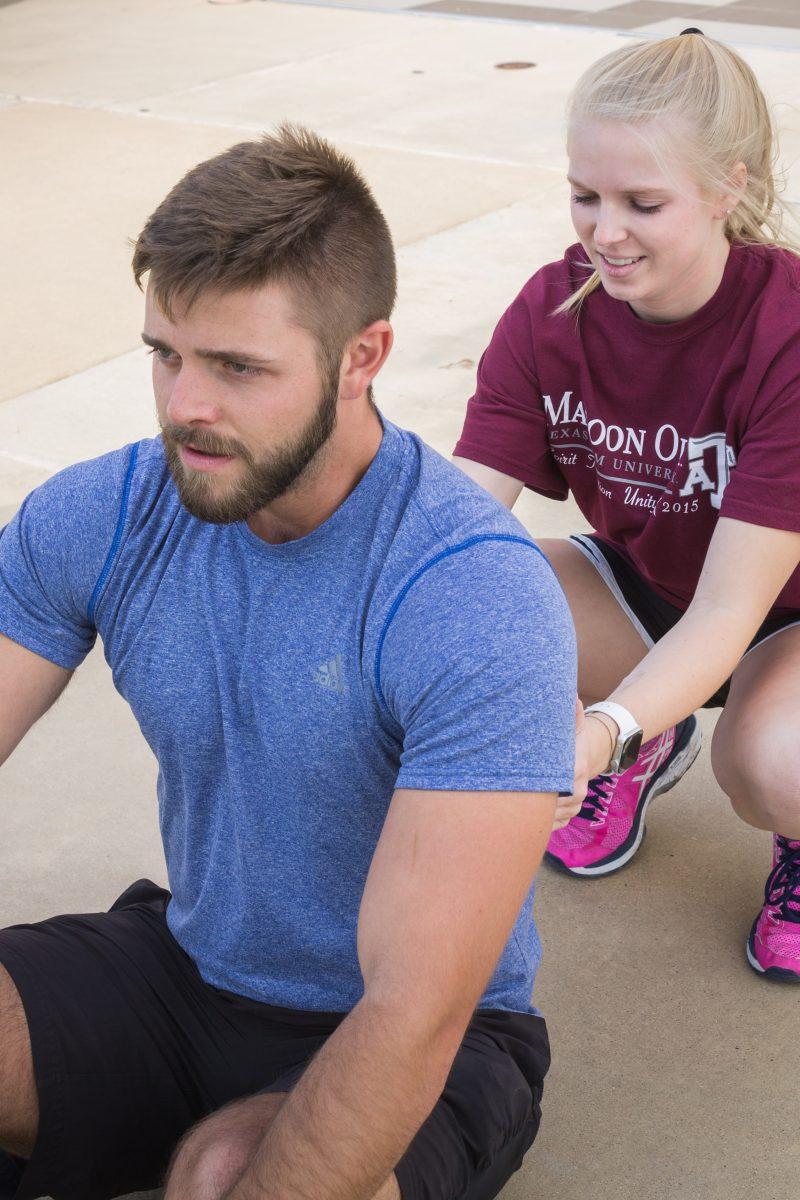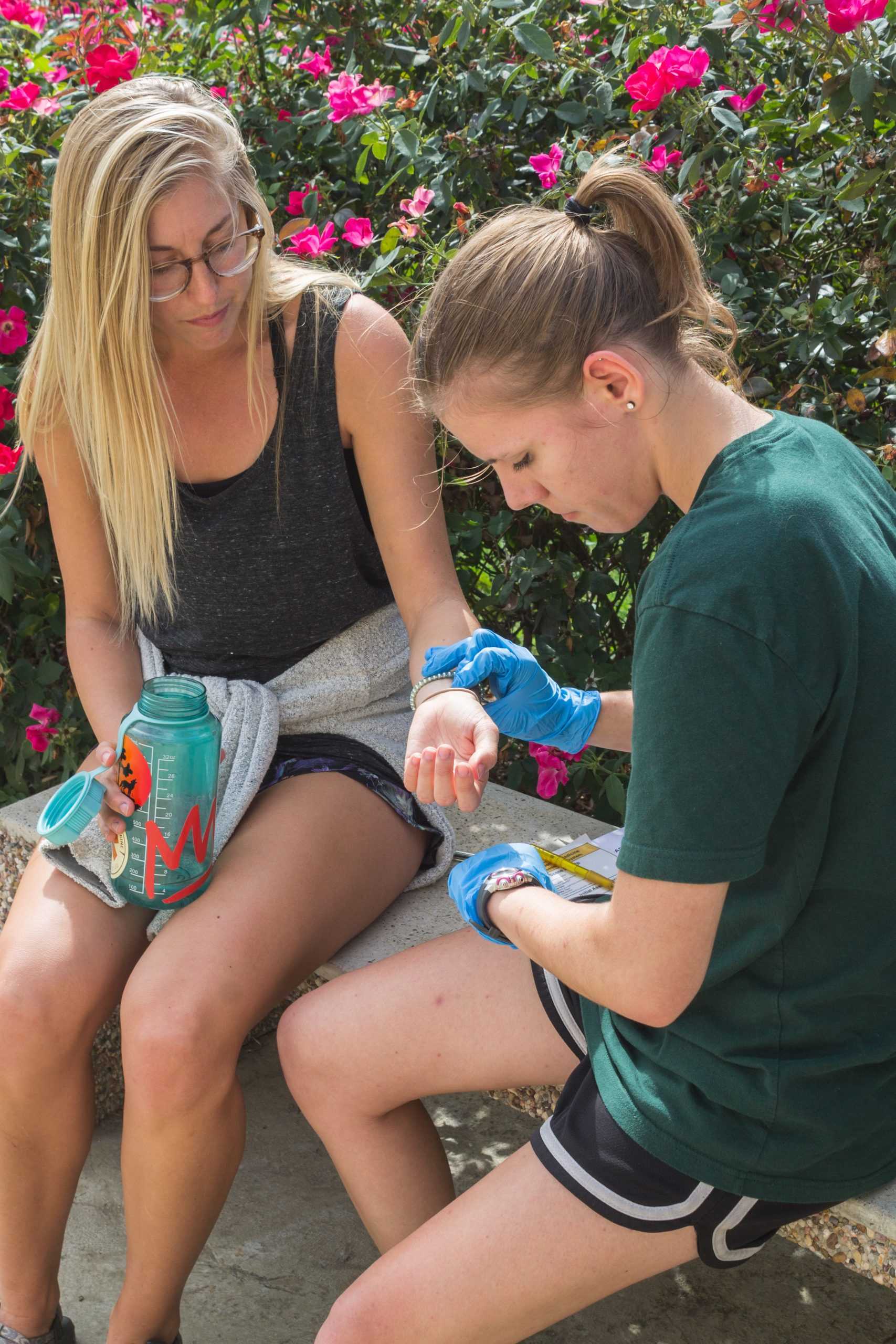Among other educational safety activities, a student was wrapped into heavy clothing and a tarp to simulate treatment of hypothermia at the Physical Education Activity Program building this weekend.
Students met for a 16 hour course Oct. 14 and 15 to earn a certificate in wilderness safety. The course included basic first aid and patient assessment, treatment of hypothermia, treatment of injuries, course of action for lightning and more.
Alex Skrocki, recreation, parks and tourism sciences junior, said she plans to work in a national park so it is important to have the knowledge to take care of park-goers that she will be responsible for.
“I think the most important thing that I’ve learned is we’re not actual health care providers,” Skrocki said. “We’re just trying to suspend whatever kind of damage has been done until health care providers can actually get to the scene, and so that means we’re not actually diagnosing patients we’re just trying to treat them to the best of our abilities.”
Garrett Garrison, recreation, parks and tourism sciences senior explained the step-by-step procedure he learned in the course to use when faced with a difficult situation in the wilderness.
“Throughout the process you’re determining if their vitals are correct, figuring out if that person needs medication, basically figuring out what they need,” Garrison said.
The hypothermia treatment demonstration involved wrapping a student in cold-weather clothing, a sleeping bag and a tarp. The idea was not to create more heat for the person with hypothermia but to ensure the heat the person already had was retained.
Skrocki said the use of hands-on activities was a useful tool for learning and memorization of critical procedures.
“Actually getting to practice and getting that muscle memory in your mind will allow you to be more confident to be able to perform those tasks,” Skrocki said.
Garrison said the course kept participants on their toes.
“Obviously when you’re in the field it’s going to be a hands-on situation if you ever have to use this knowledge,” Garrison said. “We learn everything in the classroom, the head knowledge, and then we immediately go out and apply it.”
The high level of engagement and interaction with the course was due in part to the number of hours the students dedicated to the course, according to sports leadership senior Dalton Rowan.
“It’s 8 a.m. We’re tired. It’s kind of for a grade. No one wants to be here at first, and as the class goes on, we just start interacting more and it’s just how it is,” Rowan said. “We’re in that learning environment. It’s just how it is and you’ve got to make the best of it.”
According to Rowan, the course corrects information that he learned while growing up — for example, to refrain from treating an open wound with alcohol.
“We’re really just trying to get more educated as far as outdoor wilderness goes,” Rowan said. “Whenever you’re out there and you’re just so far away from society you don’t have ambulances out there. You don’t have any kind of medical care, so what can you do with that?”
After he graduates, Rowan said he plans to move to Idaho where he can use the knowledge gained from the course to hike and camp.
“It’s good as far as having these two great instructors here, and it’s incredibly up to date information,” Rowan said. “It’s just good to know, so I feel like everyone should take this class. It’s just good to have.”
Studying survival strategies
October 15, 2017
Photo by Photo by Meredith Seaver
Recreation, parks and tourism sciences senior Larry Vire and junior Britta Haglund simulate what to do in the event of Hyponatremia also known as water intoxication.
0
Donate to The Battalion
$2065
$5000
Contributed
Our Goal
Your donation will support the student journalists of Texas A&M University - College Station. Your contribution will allow us to purchase equipment and cover our annual website hosting costs, in addition to paying freelance staffers for their work, travel costs for coverage and more!
More to Discover











